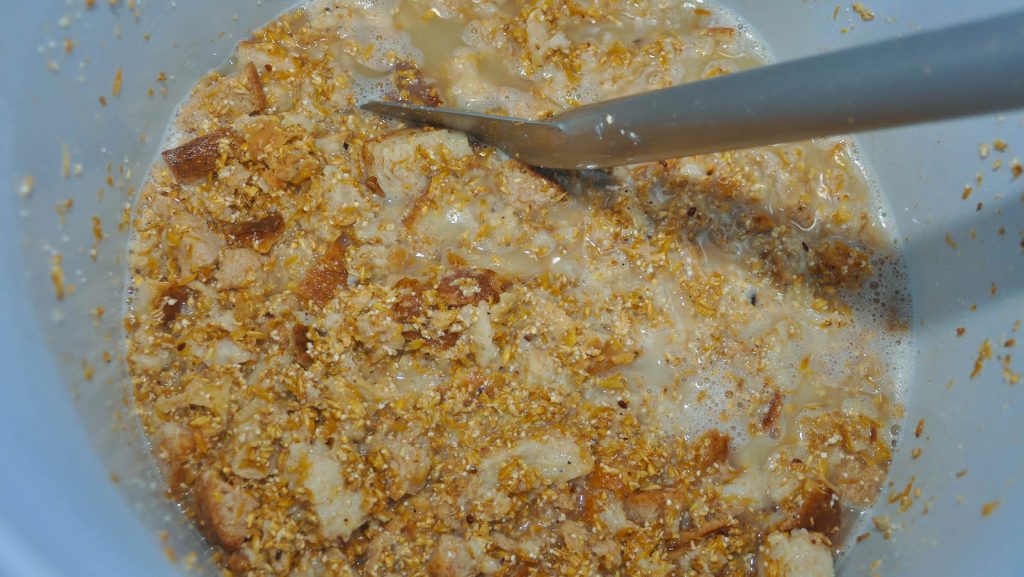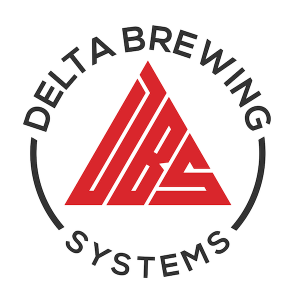Homebrewing attracts people from all walks of life with myriad interests, some looking for a fun way to spend free time, others interested in crafting the freshest example of a commercial beer, and still others who view it as a creative outlet. While I own that my own brewing tends to be far from creative, at least in terms of ingredient usage and the styles I brew most often, I greatly appreciate the thoughtfulness others take to designing and brewing unique concoctions.
 For this Brü’s Views, author of the fantastic new book, Home Brew Recipe Bible, Chris Colby joins us to share his adventurous approach to brewing beer. Former editor of Brew Your Own and
For this Brü’s Views, author of the fantastic new book, Home Brew Recipe Bible, Chris Colby joins us to share his adventurous approach to brewing beer. Former editor of Brew Your Own and  WineMaker Magazine, Chris currently writes about various brewing and wine making topics at his Beer And Wine Journal website. When he’s not coming up with crazy brewing ideas, Chris likes to share his thoughts on the current state of our nation on his new website.
WineMaker Magazine, Chris currently writes about various brewing and wine making topics at his Beer And Wine Journal website. When he’s not coming up with crazy brewing ideas, Chris likes to share his thoughts on the current state of our nation on his new website.
Cheers to both Chris and contributor Malcolm Frazer for sharing their thoughts and experiences on brewing with a little more adventure!
On Adventurous Brewing
| CHRIS COLBY |
 How do I love homebrewing? Let me count the ways. And one of the reasons I love homebrewing is that it gives me a chance to experiment and try new things. Don’t get me wrong, working on “old things” can be great — I spent numerous years brewing my pale ale and porter twice a year in order to tweak them exactly to my liking. But maybe once a year, I like to try something adventurous. Here are some of the adventures I’ve had in homebrewing and what I’ve learned from them.
How do I love homebrewing? Let me count the ways. And one of the reasons I love homebrewing is that it gives me a chance to experiment and try new things. Don’t get me wrong, working on “old things” can be great — I spent numerous years brewing my pale ale and porter twice a year in order to tweak them exactly to my liking. But maybe once a year, I like to try something adventurous. Here are some of the adventures I’ve had in homebrewing and what I’ve learned from them.
Adventures in Techniques
Several years ago, I was researching Samichlaus, the 14% ABV lager that came out every holiday season back then. In reading up on it, I found out that when the brewers made Samichlaus, they used the late runnings from another beer as their foundation water (the water under the false bottom in the mash tun). This made me wonder what would happen if you used wort for all of your brewing liquor.
Not too long afterwards, I tried it. I made a batch of wort from pale base grains, and used that as the brewing liquor for a strong, pale beer. Not too long after that, I upped the ante. I made a batch of wort from pale malt and flaked maize. I used this very light colored wort to mash a mixture of more pale malt and flaked maize. And then, I used this still light “double strength” wort as brewing liquor for my third mash. The resulting beer was very strong, but the color of a Pilsner.
I ended up calling that technique reiterated mashing. From further experimentation, I’ve learned how to improve my yield when brewing this way. (Let the second — and third, if there is one— mash go for a long time, and keep stirring it. Measure the increase in specific gravity with a refractometer.) If you want to brew a strong beer entirely from grains, and have it be very light in color, give this a try. It’s a long way to go to brew a strong beer, but it’s fun to try and makes a great story to tell at a homebrew club meeting. For more information, I’ve written about this on my website and most recently in the Nov/Dec 2016 issue of Zymurgy.
One thing I’ve learned from trying exotic techniques is that there is frequently more than one way to accomplish any brewing goal. In this example, using wort as brewing liquor is an alternate way to brew a strong beer. (The other common methods are to boil the wort for an extended period, concentrating it, or to add kettle adjuncts, including malt extract.)
Adventures in Ingredients
I mostly like “just plain beer” beers — beers around 5% ABV brewed with just malt, hops, water, and yeast. But I have made a few unusual ingredient beers over the years. For example, most Thanksgivings, I like to brew my Cranberry Zinger. Cranberry Zinger is an American wheat beer with cranberries, (cored) Granny Smith apples, and whole oranges — peel, zest, pulp, and all. It’s a lightly tart beer, with a little puckering astringency from the quinic acid and tannins in the cranberries. This, and the fact that I highly carbonate it make it very crisp and dry.
But fruit beers aren’t really that far ”out there.” I’ve also brewed a couple different beers using the soda pop Mt. Dew as part of the brewing liquor. I like this beer for a couple reasons. Firstly, it makes the joyless beer purists freak out. And oh my god (Odin), I live for that shit. And secondly, it’s actually good! Despite its green color — which carries through into the beer, BTW — the flavor of Mt. Dew is of oranges. And, many Belgian and Belgian-inspired beers use orange zest. So it’s actually a flavor that you’ve tasted before in beers. Oh, and you may be wondering about the preservative (sodium benzoate) in Mt. Dew. There’s enough sodium benzoate in Dew to stop stray contaminants from growing in it, but not enough to suppress fermentation if you pitch the normal amount of yeast. I’ve written about these two beers on my website, and my book also has a section on beers brewed with unusual ingredients.
For all my unusual ingredient beers, I’ve researched the ingredients and had to decide where in the brewing stream to add them. Do they have starches that need to be converted? Do they have compounds that need to be extracted by steeping or boiling? Do they have volatile compounds that need to be preserved? Do they contain anything — oils, tannins, etc.— that might negatively impact beer quality? When to add an ingredient is a little puzzle, and sometimes some experimentation is required.
Adventures in Equipment
I’ve got a fancy schmancy 10 gallon (38 L) brewing rig. I also have a less fancy, but still quite nice, set of Polarware pots that make a nice 5 gallon (19 L) all-grain setup and a couple stovetop extract breweries. I have a nice stainless steel cylindrical conical fermenter. I also grow large pumpkins.
You might wonder what that has to do with brewing, but I’ve used pumpkins as fermenters. One year, I grew several large pumpkins. I picked the largest two and fermented 10 gallons (38 L) of old ale between them. I learned several things from this. First, when the zombie apocalypse arrives, I can grow my own fermenters. Second, the inside of a pumpkin is sanitary. Unless the fruit is so old that it has started to rot, you can brew uncontaminated beer inside a pumpkin. I also learned that a pumpkin will not collapse in the time it takes to ferment and condition an ale. I worried about that quite a bit when I first tried it. Finally, I learned that beer fermented inside a large pumpkin ends up tasting like raw squash — so next time I try it, I’m going to smoke the inside after cutting it open.
Another great thing about homebrewing is that you can brew whatever you want. So I would never tell someone to try something new if that’s not what they wanted. I will say this, though, stretching your brewing horizons a bit can also help you with your “normal” brewing. Trying different things and seeing if they work, and if not why they don’t work, can help guide you in evaluating recipes or making adjustments when a brew day is going south. In addition, trying unusual techniques, ingredients, or equipment, makes it clear how modern homebreweing techniques, ingredients, and equipment work so well together.
So the next time you brew, consider trying something adventurous. Or don’t. Who do I look like, your guidance counselor?
| MALCOLM FRAZER |
Considering my brewing history, I figured I’d done little that would qualify as adventurous. Brewing known recipes and entering competitions has been a fun way for me to measure my progress while allowing me to hone my skills, though admittedly it has made me a rather traditional brewer. Classic lagers, American Pale, English Ales—these are the styles I brew for personal consumption, yummy for sure, but not necessarily adventurous.
Taking inventory of some of my past brews, I realized I may not be giving myself enough credit, that perhaps my initial interpretation of adventurous was a bit limited. Sure, I’ve brewed beers using chocolate, coffee, pumpkin, and even Old Bay seasoning, though it’s not something I do regularly, preferring to stick to standard beer beer. But, what about the exBEERiments? I would say the approach we take to testing brewing variables is pretty adventurous, as it often involves pushing beers to the edge of what’s considered to be common practice, which definitely requires a sense of adventure.
While I generally don’t get too excited about using extreme ingredients or obscure processes, I recently participated in an adventurous project that forced me to think outside of the box for good. My friend Mike Pound of the Pittsburgh Post Gazette was recently contacted by 412 Food Rescue, an amazing group who collects food that would otherwise be discarded and distributes to those in need, about a project to raise awareness about food waste—they  wanted to make a beer with rescued bread. Mike reached out to me to see if I’d be interested in taking the helm on recipe design and brewing the bready batch, an offer I was pleased to accept!
wanted to make a beer with rescued bread. Mike reached out to me to see if I’d be interested in taking the helm on recipe design and brewing the bready batch, an offer I was pleased to accept!
My initial thought as I approached designing a recipe for this beer was to make Kvass, a fermented beer-like beverage traditionally made with a large portion of rye bread. An admittedly lazy idea on my part, some discussion with Program Director Jennifer England made it clear Kvass wasn’t necessarily the direction they wanted to go. She explained to me, rather, that they were aiming for something closer to what they’d read about Toast Ale, a Pale Ale brewed with bread slated for the trash heap where all profits are given to a charity to fight against food waste.

Hanna Uman, 412 Food Rescue’s Special Projects Manager, provided me with a couple massive bags of a menagerie of various preservative-free artisan loaves from local bakeries, all frozen to maintain freshness. The goal for the first beer was a hazy Pale Ale with mild bitterness, American citrus hop character, and enough malt and bread character to be suggestive of it roots. My initial test batch was inspired by Toast Ale and sadly didn’t turn as good as I’d hoped with an overall muddled flavor and odd turbidity. As is often the case when brewing adventurously, lessons were learned that informed subsequent attempts to overcome these shortcomings. I considered toasting the bread to increase melanoidins and remove moisture for the follow-up batch, but with the dark flavorful loaves, I didn’t think it was a necessary step. I also found that a combination of freezing the bread, cutting it while still moist enough not to break into powder, then staling it again in the freezer for a few hours was quite manageable.
Before brewing the second iteration, I ran a few mini-mash tests to see what kind of extract I could expect from the bread and how it might impact pH. I noticed the crust seemed to drive the pH down fairly aggressively, especially the darker breads, so after compensating for that and upping the rice hull percentage, I calculated I was getting approximately 1.020 (± 0.005) gravity points per pound per gallon (PPG) on most of the artisan breads. Finally, I brewed the official beer!
Rescue Bread American Wheat
Recipe Details
| Batch Size | Boil Time | IBU | SRM | Est. OG | Est. FG | ABV |
|---|---|---|---|---|---|---|
| 5.5 gal | 60 min | 40.5 IBUs | 5.2 SRM | 1.049 | 1.012 | 4.8 % |
| Actuals | 1.049 | 1.01 | 5.1 % | |||
Fermentables
| Name | Amount | % |
|---|---|---|
| Rice Hulls | 10 oz | 4.81 |
| Bread Loaf/ Dried. Correct Gravity. | 5 lbs | 38.46 |
| Pale Malt (2 Row) | 3.5 lbs | 26.92 |
| Wheat Malt, Avangard Premium Malz | 3.5 lbs | 26.92 |
| Caravienne Malt | 3 oz | 1.44 |
| Munich Malt | 3 oz | 1.44 |
Hops
| Name | Amount | Time | Use | Form | Alpha % |
|---|---|---|---|---|---|
| Centennial | 18 g | 60 min | Boil | Pellet | 8 |
| Falconer's Flight | 14 g | 10 min | Boil | Pellet | 11 |
| Galaxy | 14 g | 10 min | Boil | Pellet | 14 |
| Galaxy | 28 g | 5 min | Boil | Pellet | 15 |
Download
| Download this recipe's BeerXML file |
With the exception of adding various types of bread to the mash, the method I used to make the beer was really no different than my normal batch sparge routine.
The OG of 1.049 supported my findings from the mini-mash test and the beer attenuated just fine. But how did it turn out? I always get a bit nervous when serving beer to large crowds for the first time, which was certainly the case here. I didn’t want to make a beer that was just okay where people shrugged their shoulders and thought, “Huh, beer with bread, doesn’t taste like poison… where’s the normal beer?” I also didn’t want to let down the people who trusted me with this project. I was actually quite pleased with the beer and, thankfully, the crowd at the charity event seemed to enjoy it as well. My goal to make a beer reminiscent of bread crust with a citrusy American hoppy note seemed to have worked!
For fun, I entered the beer as an American Wheat in the Beer For Boobs competition where it went on to take 2nd place in its category! Both judges, to my amusement, noted a “bready” character, which made me wonder if the fact I purposefully loaded the deck with wheat malt and Munich wasn’t more responsible for said character than the actual bread. Regardless, the extract contribution in addition to utilizing a product that would have otherwise been wasted was enough to cause me to view the bread usage as more than just ceremonial.
Following my participation in the 412 project, I heard they were talking to East End Brewing about making a larger batch of rescued bread beer. East End has brewed Kvass in the past, running into some issues that the owner Scott and I have spent time talking about. I shared some of the bread beer I made with Scott and his crew and they apparently dug it enough to invite me to help them brew their version. I jumped at the opportunity and had such a great time helping them brew a more bread-forward version than mine, slated to be served at the Loaf Fundraiser. A camera crew happened to be around that day to document the fun.
https://vimeo.com/190156874
Overall, I feel very fortunate to have had the opportunity to work with 412 Food Rescue in such an adventurous capacity, the experience still resonates with me as one of the most rewarding acts of brewing I have done to date.
A huge thanks to Chris and Malcolm for sharing their thoughts on brewing adventurously! If you have any stories you’d like to share, please do so in the comments section below.
Support Brülosophy In Style!
All designs are available in various colors and sizes on Amazon!
Follow Brülosophy on:
FACEBOOK | TWITTER | INSTAGRAM
| Read More |
18 Ideas to Help Simplify Your Brew Day
7 Considerations for Making Better Homebrew
List of completed exBEERiments
How-to: Harvest yeast from starters
How-to: Make a lager in less than a month
| Good Deals |
Brand New 5 gallon ball lock kegs discounted to $75 at Adventures in Homebrewing
ThermoWorks Super-Fast Pocket Thermometer On Sale for $19 – $10 discount
Sale and Clearance Items at MoreBeer.com
If you enjoy this stuff and feel compelled to support Brulosophy.com, please check out the Support Us page for details on how you can very easily do so. Thanks!














6 thoughts on “Brü’s Views w/ Chris Colby | On Adventurous Brewing”
Another great article! It’s funny, I have mixed opinions on being adventurous with brewing. There are A LOT of members in my brew club that I swear, only make “odd” beer. The kind of stuff where you just smile, nod, and walk to the closest sink before swallowing the dreadful brew. I respect their adventure and enthusiasm, but I’m not sure if they can even make an ordinary style. Sometimes you get lucky though, I actually read an interesting thread on homebrewtalk about a guy using red jolly ranchers in an IPA, apparently it’s amazing!
I’ve always been of the approach to walk before I run. Now that I’m pretty confident with the mastery of the styles I like, for my taste, I’m starting to explore in between the lines.
One recipe I’ve made recently, but have yet to brew, is a “white grape” Pale Ale with Pilsner malt, Nelson Sauvin hops and Kolsch yeast. It’s a pretty simple recipe, but I feel the light fruitiness from the Kolsch yeast might blend really well with the grape like Nelson hops, who knows, it might suck, but could be awesome. Adventurous, maybe…?
One time at the pub my friend “dosed” my sierra nevada with a red jolly rancher when I wasn’t looking. I was like “damn this sierra nevada is super fruity!” Wtf.. they change the recipe?? Like a fool, I was passing it around for people to try and all… it was actually pretty good though!
Just a thought concerning equipment. Homebrewers have wandered off the path a bit using water coolers as fermenters, Yes they’re a convenient size and easy to seal with an air lock but thats not what traditional brewers used. If you want to replicate older styles,especially UK beers, you should try open fermenting,ie a wide opening and not sealed shut. As I understand it they were made of wood or even slate which makes you wonder if we are over fussy about hygiene. I’ve found that a large plastic bucket or a metal stock pot work just fine covered with a tea towel. Although most old style breweries cooled the hot wort in large open trays I have read of at least one which used a copper coil both to cool wort and to warm fermenting beer if it got too cold. Try that in a carboy …not! And the beers came out fine.
Great, feel-good piece. Fair play, Malcolm and everyone involved.
“Chris currently writes about various brewing and wine making topics at his Beer And Wine Journal website.”
You sure about that?
The BWJ site hasn’t seen any new content since 17-NOV-16.
I am also looking into making a beer with bread. you say you was getting approximately 1.020 (± 0.005) gravity points per pound per gallon (PPG). if im using Brewersfriend software to design a recipe. what number can i put in when it calls for ppg? the number for most malts in that software averages around 30 ppg.